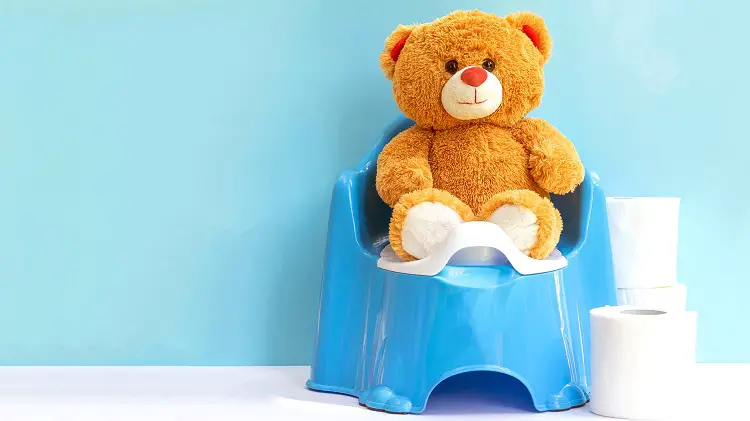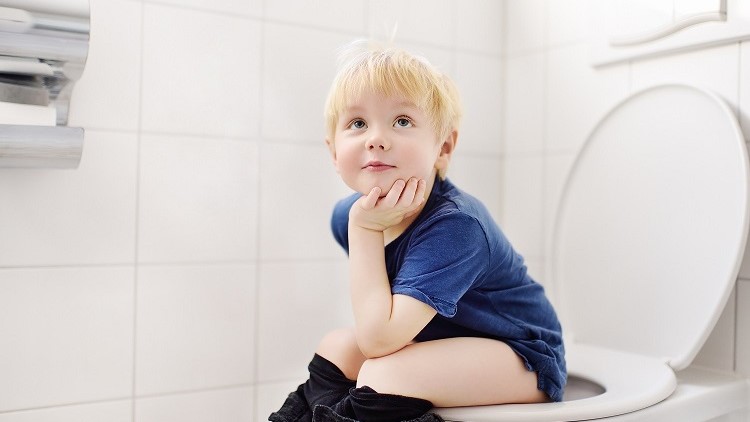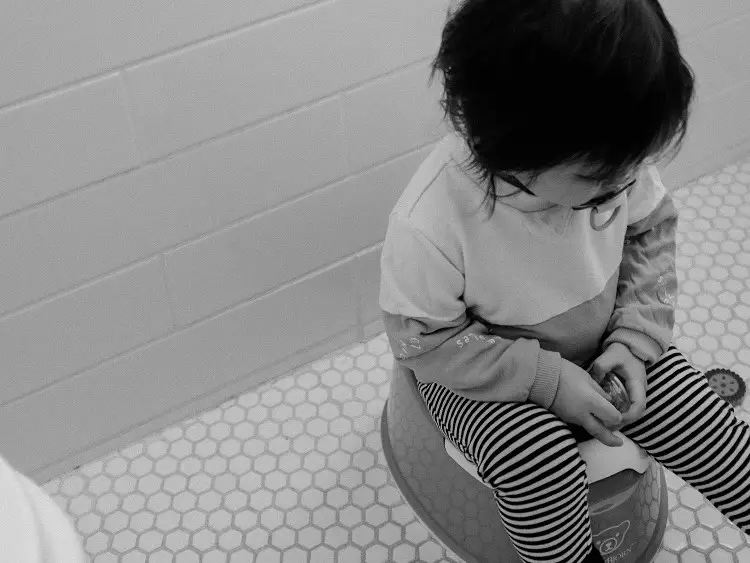Potty training a baby is not easy, especially one that is just a year old and that is a baby that has just completed a cycle, twelve calendar months, and may not even be ready to potty train.
Are you scared of going through the stress of potty training your baby? Are you thinking of the easiest way on how to potty train a 1-year-old baby? Then ride us you have nothing to worry about.
In this article, we will share with you everything you need to know about potty training; we also discuss amazing and simple steps on how to potty train a 1-year-old baby. Read On…
What Age Is Best To Potty Train A Baby?
There is no certain age to potty train a baby. The thing is, when babies want to go on the potty, they will do so without zero hassle. This usually happens around 18 months of age, and sometimes, it doesn’t happen until they clock at age 4.
According to Dr. Asta, no healthy child will enter kindergarten in diapers. That said. Most babies typically start potty training between 18 and 24 months.
Signs That May Indicate That Your Baby Is Ready To Start Potty Training

The following signs are what to look for, which may indicate that baby is ready to start potty training:
- Your baby stays dry for at least two hours during the daytime and is dry after a nap.
- Your baby follows simple instructions, like walking on their own to the bathroom, sitting down, and removing their clothes.
- Your baby is interested in wearing “big girl” or “big boy” underwear.
- Your baby knows when their diaper becomes uncomfortable. The baby may cry, fuss, or show signs of discomfort when there is a diaper blowout, they may indicate this through facial expression, posture, or language that it’s time to use the toilet. If your baby can do all these, they’re ready to start the process.
Even if your baby seems ready, parenting experts suggest avoiding potty training during transitional or stressful times.
Suppose you’re on the go, taking a vacation, welcoming a newborn, or going through a relationship or marriage difficulty. In that case, it is best advised to postpone the potty training until about a month after the transitional time.
Children will perform better when learning a new skill when relaxed and on a routine. Always speak to your child’s doctor about the best time to potty train your child.
How To Potty Train A 1-Year-Old Baby

The success of every journey and task in life depends partially on the preparations made towards the task. There is a popular cliché that says that proper preparation propels proper performance while poor preparation propels poor performance.
Before you begin the toilet transition for your baby, make sure there is a proper count down to that day, but also make sure your baby is ready for transitioning for the tips to be effective.
Potty training a ready child is quite different and less demanding than one who’s not yet ready. Once you’re unsure whether your baby is ready to potty train then you have to watch out for these various signs we mentioned below to here make the transition easier.
How To Potty Train A 1-Year-Old Baby – 11 Tips To Help You Cope
1. Have a Good Plan
For you to embark on the potty training experience, you be should ready for the stress and be convinced that you can achieve whatever you want.
Don’t be frustrated or faint-hearted if things don’t work out as planned or seem to be taking a long time.
According to a study from the Medical College of Wisconsin in Milwaukee, when embarking on Potty training, ensure you have a good plan and get perfect timing because potty training sometimes can take up to a year.
Dr. Maureen O’Brien, Ph.D. director of parenting and child development at The First Years in Avon, Massachusetts, says the two big surprises are that toilet-teaching isn’t fast and is quite a daunting task for parents.
Several areas of child development need to develop first. The child ought to know how to communicate properly, be aware of his bodily feelings, and understand how much time he needs to get there.
2. Be Patience
Patience is a virtue and should be worn as one. The luxury of patience is very much needed in the practice of potty training.
As a parent who wants to potty train his/her child, you should exercise patience because all children are not the same.
While some child’s potty training may not be an uphill climb and a lot easier, with some babies, it could be extremely demanding. Still, with patience worn as apparel, potty training can be achieved even if it seems difficult to others.
3. Stick to a Routine
In learning how to potty train a 1-year-old baby, you must be aware that sticking to a particular routine is the key.
You must also know that this consistency involves the rule, “Whatever you do at home with your potty training plan, you also need to do it elsewhere.
For instance, if you discover that your child enjoys reading a book while on the potty, then convince your child’s daycare provider about sending in a favorite book.
But you may encounter difficulty keeping to a routine outside your home, especially in daycare centers, because they may be too busy to customize potty training to each child.
You have to seek their opinion on how best they can help you achieve success so that the training isn’t compromised or jeopardized. You can also try introducing whatever they have been using at the daycare to achieve success.
4. Use Rewards or Gifts
You notice the excitement and joy when your baby receives a gift or reward from you. The feeling is undiluted and is chuckling amazing. Who doesn’t like gifts or the mere mentioning of rewards?
Gifts have the power to work wonders, so when you reward your little one each time there is a success, you motivate him or her.
It tends to be magical, especially if he/she is made to realize that the gift resulted from the success of that particular potty training session.
I bet your baby will be looking forward to pottying training sessions, provided the gifts or rewards keep flowing in but do not spoil your child in the process.
Once the training has been achieved, then withdraw the use of gift bribes. Increasing the number of gifts when your baby wipes him or herself can be amazing.
Most babies are uninterested in learning how to wipe themselves, and the eventual practice of wiping can be a bit yucky for the baby. Introducing rewards or gifts can encourage your baby to learn potty training.
5. Be Consistent
Consistency must also be key, do not try changing a working technique or routine as that singular act could ruin your success.
Some parents have attested that they achieved success by sticking to a working plan like putting their child on the toilet every 20 minutes, without fail. And being consistent with it made their potty training easier.
A parent also shared an experience of how she was able to achieve potty training by sticking to a plan of putting her son on the potty each evening while she ran his bath.
She attested to that the fact that potty training her son was made a lot easier because the sound of the running water seemed to encourage him, and within a few nights, she had success.
She also admitted to keeping up with the routine at that same time every evening. And consistency helped in potty training her child.
6. Praise the Baby
Praising your baby when there is a success can be magical but do not limit the praising to just when there is a success.
You should also praise them even when there seems to be a failure; commend your baby’s efforts because such acts build their confidence and help make potty training effective and magical.
Once your baby has confidence, the self-esteem of the baby is built, and even in the face of failures, your baby still sees opportunities to be successful and would want to try out more of the training.
Remember, if you are always reprimanding your child in the face of failures, then you are making the child skeptical and making him or her dislike the training session.
7. Choose a Location
Another effective way to learn how to potty train a 1-year-old baby is to choose a good location. While potty training my son, I found that the kiddie lids on top of the toilet were too difficult to use right away.
So I started potty training my 1-year-old son with a mini-Elmo potty seat, which we kept in the living room since he spent the most time there.
We used this method until we gradually moved it closer and closer to the bathroom and eventually transitioned our way up to a Dora seat that went right on top of the toilet.
Another trick that works is placing the potty right next to your baby’s bed so that he/she can have his own space. This helps the baby to get to it faster, especially during the early hours of the day or at night.
8. Practicing Aim
I could remember when I tried potty training my son, getting him to learn the standing-up thing was hard, so we turned it into something fun.
I put six Cheerios in the potty and asked my son to aim at them when he peed. Every time he did it right, I rewarded him with a chocolate pack from a bag of goodies I picked up at the dollar store.
Another mom shared her own story saying, “We usually put a few drops of food coloring into the toilet bowl so my son Jason could see the water change color while peeing standing up.
She said the same trick worked for our daughter; we just sat her on the toilet backward so she could see the colors.
9. Make It Fun
Babies may feel intimidated by the big task of learning how to potty train. Fun games, stories, and other enticing activities can help make their transition easier.
Jennifer Walker, a mom, narrates her trick she says “Once my babies were showing signs that they’re ready to potty train (around 2 to 2 ½) old.
We allowed them to run around the house naked before bath time and encouraged them to use the potty. Then we allow them to go sans pants at home for a long time.
Interestingly, after they’ve learned naked-potty use, we worked our way up to clothes. At first, we started with underwear, then eventually pants.
Another mom also shared her story, saying, “We usually set a timer every 30 minutes, and then we increase it as we succeed.
She further narrated that as soon as the timer goes off, her daughter says, ‘Potty time.’ This makes her feel in control while we make a game of choosing which potty to sit on.
10. Figure out the Fear
Our son started peeing on the potty at age18 months, but he was so scared to do ‘the other. Even after we’ve introduced many rewards, we become very frustrated.
We had to turn to the doctor, who explained that some children view bowel movements as a literal part of themselves and are scared to watch them flush away. This made our minds settled because our son was a very analytical child.
We managed to get him to use the potty after showing him a kid’s anatomy book and explaining to him how the digestive system works, and surprisingly he started going number two the very next day!
11. Using Underwear
Another effective way to help your baby potty train is wearing their underwear. Amy Wilson says “My son’s pediatrician told me that my son had troubles when wearing Pull-Ups because he felt they were no different from a diaper.
The only difference with Pull-Ups was that my son doesn’t need to lie down to get them on.
This method turned out to be effective because when we stopped using Pull-Ups and transitioned to using big-boy underwear on him, he started using the potty immediately.
Read: 10 creative ways to childproof toilet paper roll from child
Pro Tips For Potty Training Boys
When you’re potty training your son, a lot of experts recommend to start sitting down. According to Dr. O’Brien, this is recommended not just because of the mess factor.
As a parent, when your baby is developing, you should keep the number of variables that he needs to think about to a minimum.
Deciding whether to let your baby sit or stand can cause him to hesitate for a while—and those times can be crucial.
Other Pro Tips On How To Potty Train A 1-Year-Old Baby
- Clear up the calendar of any major appointment or travel for the first month or so.
- Make sure your floors, car seat, or anything with quilts, towels, or yoga mats are free from any potential accidents.
- Make sure you invest in the right gear.
- Make sure your bathroom is comfortable.
- Inform your baby of what you are about to do before you start.
- Use consistent language.
- Keep a journal to track your progress (If any).
- Commit to 40 days.
Related Posts:
- Safety Rules Every Child Should Know
- Baby Cries When Changing Diaper (15 Tips To Help You Cope)
- When Do Toddlers Stop Using High Chairs
- What To Do With Old Cloth Diapers
We hope that your question on how to potty train a 1-year-old baby has been answered. We believe that if you practice these simple but amazing steps potty training will surely be easy for you, and the results will be rewarding.
Good luck! And enjoy the absolute cuteness of a one-year-old tush in undies!

